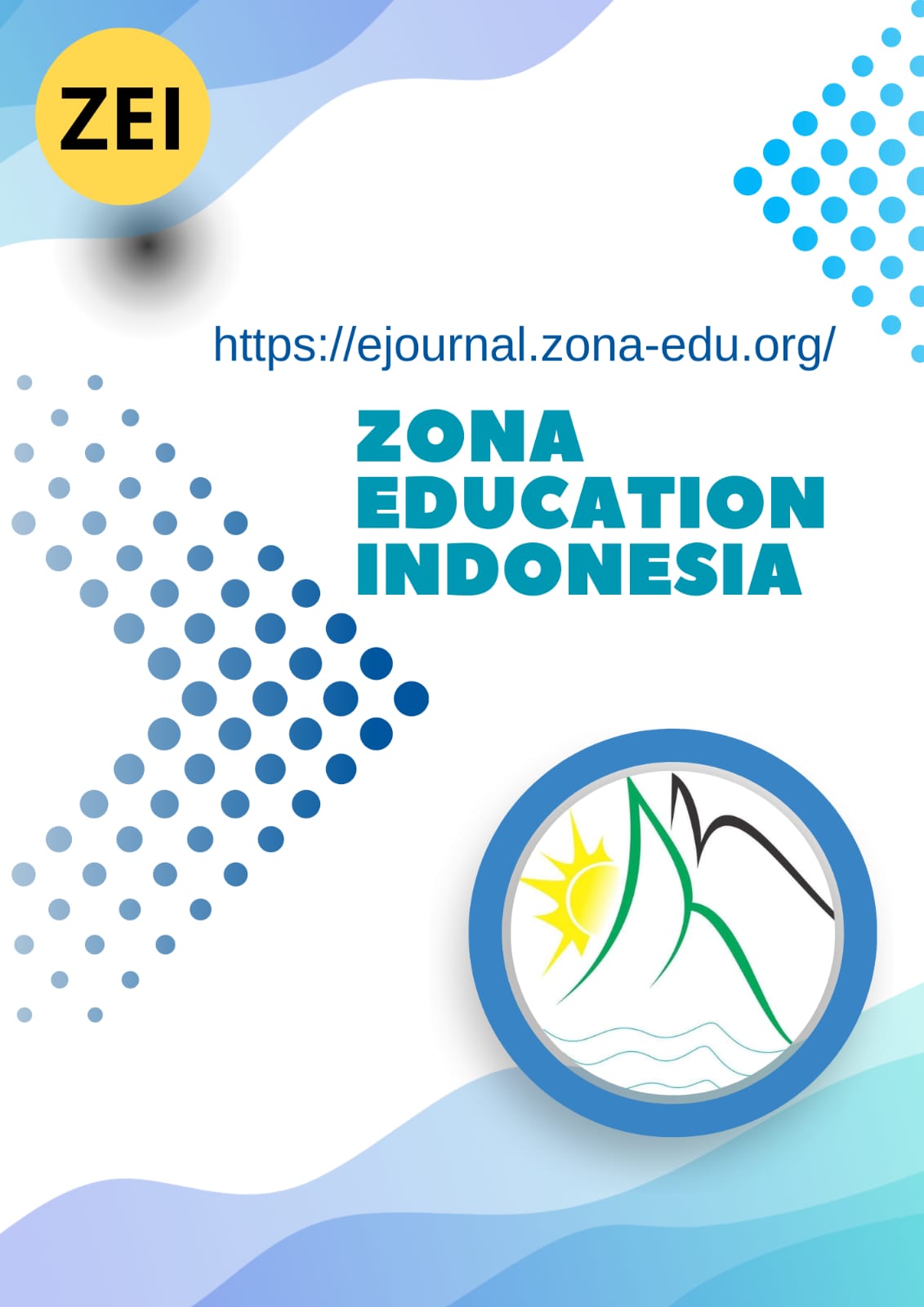The Influence of Peer Groups, Social Media Advertisements, Preventive Policies of the School of Origin and Personal Religiosity on the Level of Exposure to Online Gambling in New Students of Muhammadiyah Universities in Greater Jakarta
Keywords:
Online Gambling, Problem Behavior Theory, Binary Logistic RegressionAbstract
This research is motivated by the limited studies on online gambling exposure among high school graduates entering college, despite its significant impact on adolescent behavior and mental health in Indonesia. The study aims to measure exposure levels and examine the effects of two risk factorsgambling advertising on social media and peer association and two protective factors preventive school policies and personal religiosity among new students at Muhammadiyah Universities (PTM) in Greater Jakarta. Using a quantitative approach, the study involved 584 first-year students selected through simple random sampling from four PTMs: UMJ, UHAMKA, UMT, and UMBARA. Data were collected via an online questionnaire employing the Problem Gambling Severity Index (PGSI) and researcher-developed Likert scales, then analyzed using binary logistic regression. Results revealed that 18.8% of respondents had varying levels of exposure to online gambling. Logistic regression showed significant influences: gambling advertising (OR = 9.14) and peer association (OR = 7.00) increased risk, while preventive school policies (OR = 0.52) and high religiosity (OR = 0.36) reduced risk. Interaction effects between risk and protective factors were not significant, indicating that each factor operated consistently across respondent categories. These findings align with Problem Behavior Theory and highlight the protective roles of religiosity and school policies. The study concludes that online gambling exposure is shaped strongly by digital and social environments, whereas religious values and institutional policies act as safeguards. The implications include theoretical contributions to PGSI adaptation in Indonesia and practical recommendations for policymakers and educators to strengthen preventive interventions, enforce policies, and promote religious values
Downloads
References
American Psychiatric Association. (2013). Diagnostic and statistical manual of mental disorders (5th ed.). American Psychiatric Publishing.
Arnett, J. J. (2010). Adolescence and emerging adulthood: A cultural approach (4th ed.). Pearson.
Bandura, A. (2001). Social cognitive theory of mass communication. Media Psychology, 3(3), 265–299. https://doi.org/10.1207/S1532785XMEP0303_03.
Blaszczynski, A., & Nower, L. (2002). A pathways model of problem and pathological gambling. Addiction, 97(5), 487–499. https://doi.org/10.1046/j.1360-0443.2002.00015.x
Delfabbro, P., King, D. L., & Gainsbury, S. M. (2020). Understanding gambling and gaming skill and its implications for the convergence of gaming with electronic gambling. International Gambling Studies, 20(2), 171–183. https://doi.org/10.1080/14459795.2020.1711769
Griffiths, M. D. (2015). Adolescent gambling. In L. C. Mayes & M. Lewis (Eds.), The Cambridge handbook of adolescent development (pp. 543–556). Cambridge University Press.
Gupta, R., & Derevensky, J. L. (2000). Adolescents with gambling problems: From research to treatment. Journal of Gambling Studies, 16(2–3), 315–342. https://doi.org/10.1023/A:1009432231542
Hodge, D. R. (2007). A systematic review of the empirical literature on intercessory prayer. Research on Social Work Practice, 17(2), 174–187. https://doi.org/10.1177/1049731506296170
King, D. L., Russell, A. M. T., Hing, N., & Gainsbury, S. M. (2020). Adolescent gambling: An exploratory study of gambling advertising, peer influence and problem gambling. Journal of Behavioral Addictions, 9(1), 100–109. https://doi.org/10.1556/2006.2020.00011
Koenig, H. G. (2012). Religion, spirituality, and health: The research and clinical implications. ISRN Psychiatry, 2012, 278730. https://doi.org/10.5402/2012/278730
Korn, D. A., & Shaffer, H. J. (1999). Gambling and the health of the public: Adopting a public health perspective. Journal of Gambling Studies, 15(4), 289–365. https://doi.org/10.1023/A:1023005115932
Lussier, I., Derevensky, J. L., Gupta, R., Bergevin, T., & Ellenbogen, S. (2007). Youth gambling behaviors: An examination of the role of resilience. Psychology of Addictive Behaviors, 21(2), 165–173. https://doi.org/10.1037/0893-164X.21.2.165.
Marlatt, G. A., Baer, J. S., Donovan, D. M., & Kivlahan, D. R. (1988). Addictive behaviors: Etiology and treatment. Annual Review of Psychology, 39(1), 223–252. https://doi.org/10.1146/annurev.ps.39.020188.001255
Parker, J. D. A., Summerfeldt, L. J., Taylor, R. N., Kloosterman, P. H., & Keefer, K. V. (2013). Problem gambling and its correlates among university students. Journal of Gambling Studies, 29(4), 757–769. https://doi.org/10.1007/s10899-012-9332-0
Petry, N. M., Blanco, C., Jin, C., & Grant, B. F. (2019). The prevalence and correlates of gambling disorders in the United States: Results from the National Epidemiologic Survey on Alcohol and Related Conditions. Journal of Clinical Psychiatry, 80(6), 19m12894. https://doi.org/10.4088/JCP.19m12894
Shaffer, H. J., & Korn, D. A. (2002). Gambling and related mental disorders: A public health analysis. Annual Review of Public Health, 23, 171–212. https://doi.org/10.1146/annurev.publhealth.23.100901.140532
Simons-Morton, B., & Farhat, T. (2010). Recent findings on peer group influences on adolescent smoking. Journal of Primary Prevention, 31(4), 191–208. https://doi.org/10.1007/s10935-010-0220-x
Turner, N. E., Macdonald, J., Bartoshuk, M., & Zangeneh, M. (2008). Adolescent gambling behavior, attitudes, and gambling problems. International Journal of Mental Health and Addiction, 6(2), 223–237. https://doi.org/10.1007/s11469-007-9117-1.
Uskul, A. K., & Kjell, O. N. E. (2018). Religious and spiritual factors in health. In S. H. Schwartz & S. J. Knippenberg (Eds.), Handbook of culture and psychology (pp. 513–536). Oxford University Press.
Zuckerman, M. (2007). Sensation seeking and risky behavior. American Psychological Association. https://doi.org/10.1037/11555-000
Downloads
Published
How to Cite
Issue
Section
License
Copyright (c) 2025 Dendi Wijaya Saputra

This work is licensed under a Creative Commons Attribution 4.0 International License.





